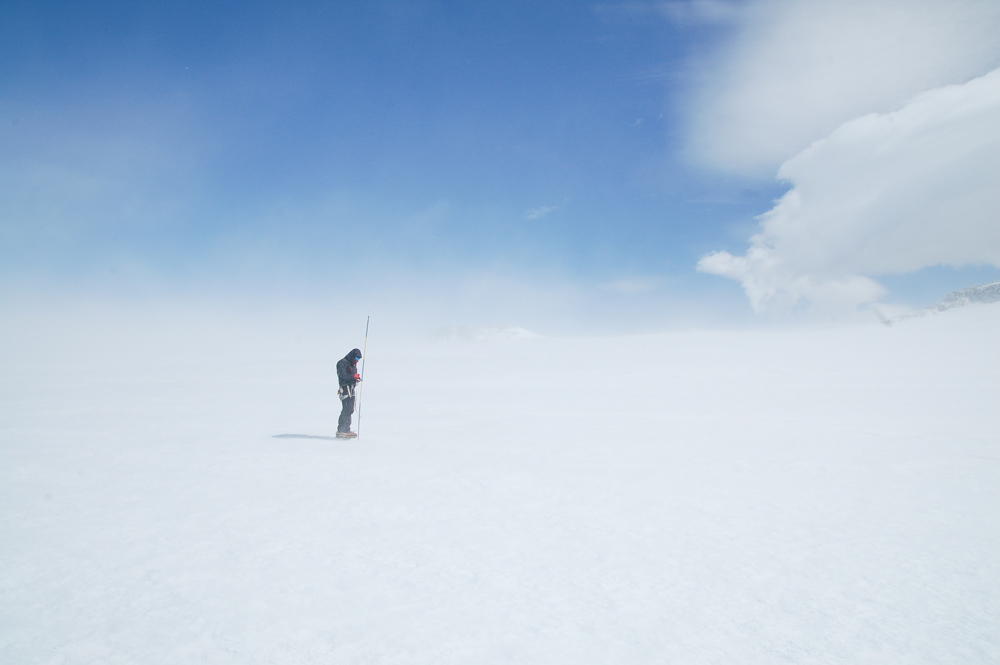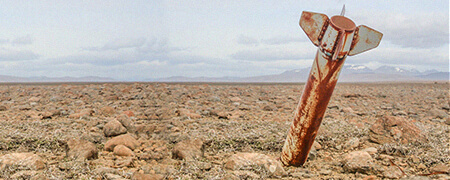Nonostante la grande distanza dalla terraferma e il ridotto impatto umano, che ne fanno un modello perfetto di wilderness, le isole subpolari Kerguelen (Terre Australi e Antartiche Francesi nell’Oceano Indiano) rappresentano un caso esemplare per illustrare i processi costitutivi dell’antropocene, l’epoca attuale.
The subpolar Kerguelen islands (Austral and Antarctic French Lands in the Indian Ocean) are situated a great distance from the mainland and have low human impact, making them a perfect model of wilderness. Despite this, they are an exemplary case to illustrate the constitutive processes of the Anthropocene.
Se da un lato questi processi stanno velocemente modificando il pianeta e portando al collasso gli ecosistemi su scala planetaria, dall’altro, cambiano anche rapidamente i tempi e i modi con cui le relazioni umane si esprimono. Ambientato a Grande Terre, la maggiore delle isole Kerguelen, il documentario intreccia le storie della comunità di persone che abita questo luogo, in un confronto dialettico che racconta l’impatto dell’azione umana sul pianeta dalla prospettiva singolare offerta da uno dei luoghi più isolati del globo. Da queste premesse ha inizio il lavoro di scrittura e di ricerca di The Last Layer. L’idea alla base del film è quella di esplorare il tema dell’antropocene tramite due direttrici principali: la prima, che avrà come scenario l’arcipelago, due diverse navi e due comunità, ognuna con un capitale umano molto differente, sarà descritta nel documentario attraverso un approccio osservativo.
If, on the one hand, the ongoing processes of our times are rapidly modifying our planet and driving ecosystems to a state of collapse on a worldwide scale, on the other, there is also a rapid change in the times and ways in which human relationships are manifested. Set in Grande Terre, the largest of the Kerguelen islands, the documentary weaves together the stories of the communities of people who inhabit the island, through a dialectic exploration of the impact of human action on our planet, from the unique perspective offered by one of the most isolated places in the world. In past centuries, the Kerguelen, given their remote position and the extreme weather conditions, have inspired writers like Edgar Allan Poe and Jules Verne, who have set their tales of explorers and castaways on these very islands. Today, continuing in this tradition, researchers who live on the islands take on the role of contemporary castaways, and, far from the comforts of modern life, in extreme meteorological conditions and close to the rhythms of nature, live in a spirit of sharing and communion of intents.

Da un lato, un gruppo di ricercatori e volontari che considera l’isola un santuario da proteggere e da studiare. Di età diversa, e con specializzazioni e compiti differenti (dallo studio dei ghiacciai, al monitoraggio delle popolazioni di uccelli marini, all’abbattimento di specie invasive), questo gruppo eterogeneo di ricercatori e ricercatrici vive in isolamento sull’isola di Kerguelen, lontano dagli agi del mondo contemporaneo, dando vita a una comunità solidale, forse in diretta continuità con quelle ricreate nei secoli passati dai numerosi naufraghi che hanno abitato l’isola. Dall’altro, gruppi organizzati di turisti, a bordo di esclusive crociere di lusso, viaggiano in luoghi remoti per poter assistere alla scomparsa delle ultime frontiere selvagge del pianeta, in un’istantanea del cambiamento che il nostro pianeta vive. Le isole Kerguelen rappresentano quindi il teatro dell’incontro-scontro fra queste realtà, e più in generale, dell’interazione tra fenomeni atmosferici, popolazioni animali e l’essere umano.
The condition of the “castaway”, therefore, paradoxically represents a privileged perspective from which to describe the contrasts of today’s world. Indeed, if the protagonists of ancient shipwrecks desperately inspected the beaches in search of traces of the outside world that would make them feel less alone and less isolated, nowadays, even in the most remote parts of the earth, it is almost impossible to avoid coming across materials that the industrialized society has produced and left behind. The omnipresence of human traces and signs, even in the form of waste washed up on the shores by the ocean currents, constitutes one of the typical elements of the Anthropocene. In the contemporary age, the condition of the castaway, far from human activities and industrialized society, therefore becomes desirable and takes the form of an almost exclusive luxury. At the same time, in the wake of the theories of the anthropologist Eduardo Viveiros de Castro, the shipwreck, seen as despondency, loss and the fading of hope, becomes a symbol of our times. In this sense, the idea of a sustainable, harmonious relationship with nature and the possibility of limiting the effects of global warming are perceived by many as being utopian and unrealistic, and this leads to fear for the end of the world as we know it today.
The Last Layer aims at offering a portrait of contemporary times, through the perspective offered by one of the most remote places on Earth.
CREDITS
produced by Caucaso
in collaboration with Polar Foundation, University of Rennes – Subanteco project, Sapienza University of Rome
with the support of Scientific Exploration Society
A project by Ettore Camerlenghi, Roberto Mondin and Davide Marconcini
